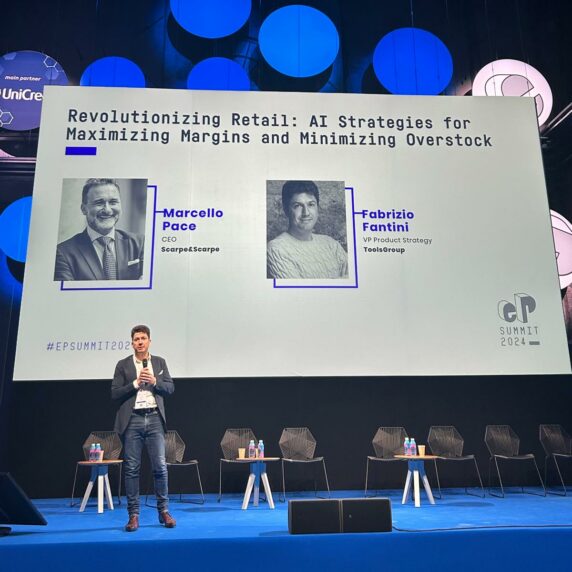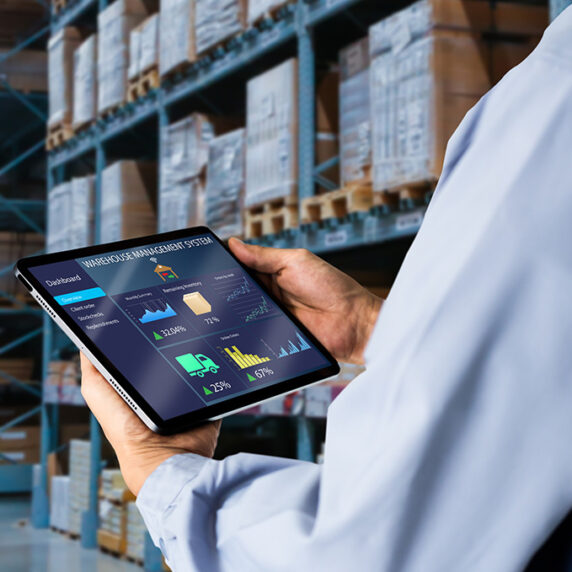Innovation is core to Boggi Milano. It’s the founding value that enabled the company’s transformation from a small boutique in 1939 to a rapidly growing ambassador of premium Italian style for cosmopolitan men all over the world, with 190 stores in 38 countries. The latest example is the company’s adoption of fully automated supply chain replenishment, an innovation introduced in partnership with Evo Pricing. This artificial intelligence solution powered by Microsoft services enabled 4 percent like-for-like revenue growth, even while overall stock shrank by 12 percent, thanks to accelerated learning and greater local relevance.
International growth highlights the need for change
Boggi Milano built its success on providing expert, personal customer relationships.
“We had developed our supply chain systems in-house over the course of the previous 20 years,” said Marco Benasedo, Chief Information Officer at Boggi Milano. “While the technology was robust, it was designed for a smaller retail footprint, mostly in Italy. Our accelerated international growth suggested we rethink this system, to allow for greater local customization, faster reaction to changes in demand, and efficient rebalancing of availability through point-to-point exchange of inventory across stores. We searched for a leading-edge partner with specific focus and skills in predictive analytics, which we found with Evo Pricing, also thanks to their partnership with Microsoft.”
The automated demand forecast of Evo Pricing allocates the right products to the right stores at the right time, reducing wasted overstock and freeing up faster-selling inventory while reducing complexity in the supply chain.
“If you ask a fashion manager what they are most concerned about, it’s the ability to meet and anticipate customer demand while responding to trends and keeping day-to-day operations manageable — it’s a lot about innovation that works,” said Elena Marocco, Chief Supply Chain Solution Architect at Evo Pricing. “Building on the Microsoft stack with Azure, SQL Server, and Excel, we deliver cutting-edge solutions to fulfill precisely those needs.”
The integration of Evo Pricing with Microsoft technology is deep and broad. Excel provides a powerful and familiar front end for Evo Pricing via native add-in integration. Azure provides scalability and security for the solution infrastructure. SQL Server provides ease of use and reliability, benefiting data scientists and developers.

Innovating the supply chain
“Our supply chain solution is now able to forecast demand for nearly any type of product and service, leveraging proprietary data on 1.2 billion people globally and $100 billion of B2C and B2B transactions,” said Fabrizio Fantini, CEO of Evo Pricing. “We invested over 200 cumulative person years of research and development over the past six years to achieve this milestone.”
Evo Pricing predicts daily sales for each store, right down to product and size, showing how an accurate store-level demand forecast leads to greater diversification of product range and stock levels among stores, products, and customer segments relative to the past, in turn unlocking greater inventory efficiency. The transformative impact of its solutions was featured in a Harvard Business School case study in 2019.
Essentially, Evo Pricing’s strategy is to sell more with less inventory overall, thanks to the intuition that each store needs only very specific products and sizes every day, based on its local, seasonal demand.
Increasing efficiency
Reducing stock presumably should increase the efficiency of inventory allocation, but in reality lower stock allocation magnifies the impact of errors in the demand forecast. With Microsoft-powered AI, however, that changes. On average, Evo Pricing’s AI reduced forecast errors by 72 percent, leading to significant real-time improvement in customer service levels and reduction in stock-outs.
Evo Pricing first integrated the company’s product, store, and customer attributes into its system by matching the company’s internal data to its proprietary data model: market benchmarks, industry statistics, social trends, and customer profiles — even the local weather. Armed with a more accurate customer demand forecast, overloading each store with stock early in the season was no longer unnecessary.

“While it is impossible to anticipate customer needs before they emerge, we can increase customer relevance by delivering the right products to the right stores at the right moment – crucially also by exchanging inventory across stores when economically profitable,” said Fantini.
The replenishment solution mapped out stock transfers to exchange higher-demand articles across the right stores in the right sizes so that items not selling well in one location could be transferred to another store, transforming dead inventory into profitable sales.
A more impactful and accurate supply chain system delivers positive ROI quickly.
“Within the initial seven-week A/B test, the new automated replenishment system increased like-for-like sales by 4 percent while reducing inventory levels by 12 percent,” said Alessandro Pozzi, Chief Operations Officer, Boggi Milano.
For inventory transfers across stores, Pozzi saw “a whole order of magnitude improvement in the sell-through of products after they were transferred to a different store, compared to before. This reinforced our confidence in the predictive abilities of this innovative application of artificial intelligence, beyond any reasonable doubt.”
For Boggi Milano, less really ended up being more. Within just seven weeks, the Microsoft-powered solution of Evo Pricing simplified inventory management, reduced overstock and fragmentation, and eased warehousing and storage issues — all while increasing full-price sell-through and revenues.
If you ask a fashion manager what they are most concerned about, it’s the ability to meet and anticipate customer demand while responding to trends and keeping day-to-day operations manageable — it’s a lot about innovation that works. Building on the Microsoft stack with Azure, SQL Server, and Excel, we deliver cutting-edge solutions to fulfill precisely those needs.








